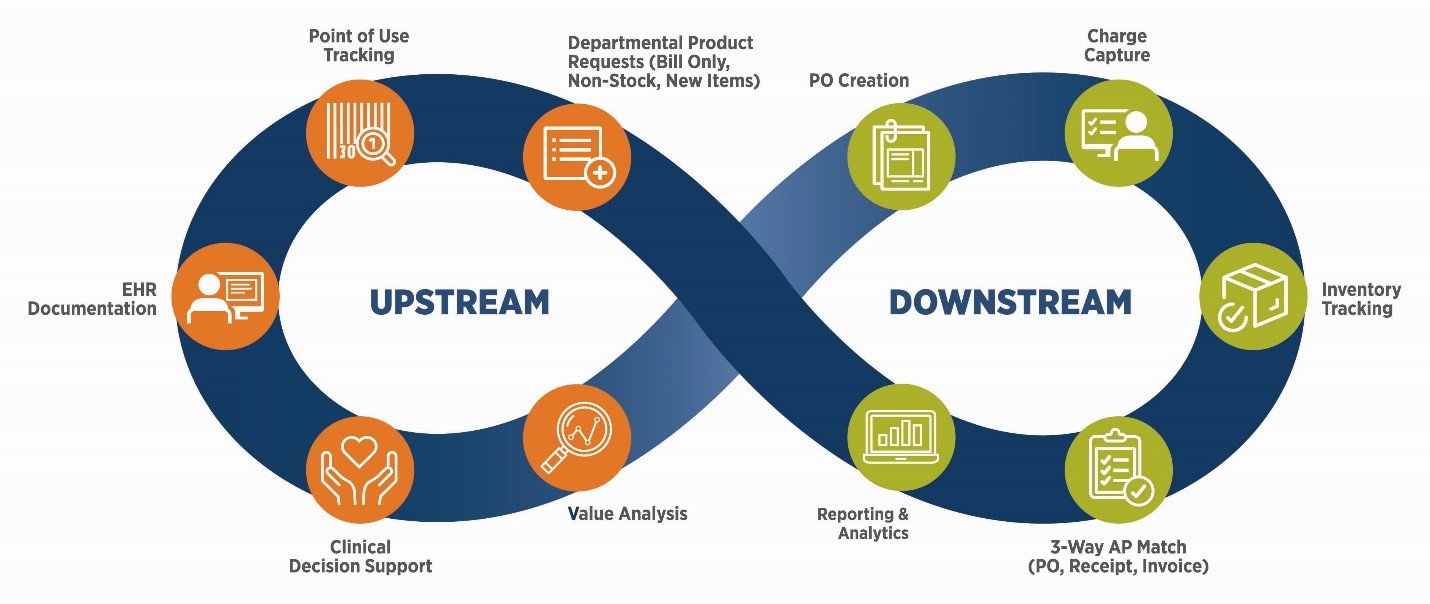Mastering The Item Master – Data Governance In Healthcare
By Lee Ann McWhorter and Marsha Flores Harris, FDB Prizm, First Databank

Value-based care places many demands on health systems, most notably the importance of having a data governance strategy. Your data governance strategy should include data sources used by the EMR/EHR, ERP, MMIS, and financials systems. In many healthcare settings, the facility’s MMIS Item Master is the common data source used throughout the facilities systems and business processes, thus putting incredible pressure on the item master to be as accurate as possible. Vizient research shows that roughly 30 percent of the average item master contains bad data. (Vizient, 2018) As inferred above, the item master can impact multiple areas within a hospital. Areas most affected include purchasing, inventory management, clinical decision support, quality management, surgical supply documentation, value analysis, EMR documentation and third-party reimbursements to name a few, are all effected by the data you populate in the item master.
Best in class healthcare organizations consider their item master as the foundation for achieving the following:
- Reducing risk to patient safety
- Decreasing labor, supply and logistical expenses
- Lowering “off contract” spend
- Increasing reimbursements and reduction in accounts payable
- Improving analytics and reporting through accurate data
And don’t forget, supply chain data plays a critical role in driving high quality of care. AHRMM’s CQO Movement looks at the cost, quality and outcome with the goal of delivering greater value to patients. Data quality is imperative to upstream activities such as clinical decision support and value analysis. The quality of care that an organization will provide is truly dependent on clean data.
For example, Dr. Joseph Drozda, Director of Outcomes Research at Mercy Health, states that “device attributes, parameters, and specifications (e.g., size) are key criteria used by clinicians in the selection and customization of devices to individual patients. Device attributes also can strongly correlate with outcomes (e.g., stent diameter and restenosis rate).”
So How Can You Maximize Item Master Efficiency?
Keeping item master data accurate requires significant resources and time. Organizations average 25 minutes per SKU annually to address out-of-sync data issues. (Abraham, 2014) The item master must have a single point of accountability with roles assigned to each person with access. Each item must have a standardized description and nomenclature. Contracted items must be validated and updated daily with every change.
Most importantly, an organization must establish data governance at all cost. Make sure your item master file has consistent rules regulated by only a few within your organization to ensure consistency.
Identify who should be managing data at all points of entry. Create a consistent process for requisitioning, order fulfillment, charge capture, purchasing and accounts payable and make sure you collaborate with other departments that are using supply chain data.
Adhere to the policies and track the exceptions. Ensure that the rules are being followed and that approvals are in place to control exceptions. And if possible, address exceptions in real time. This will enable you to avoid problems downstream in places like accounts payable when billing for the product. Develop methods to measure policy compliance and understand that your organization is constantly growing and changing to meet the needs of the healthcare market.
Where Do I Start?
Identifying the data break points can be difficult and cumbersome and often requires manual research and validation techniques. Once you have done so, we recommend creating a visual representation of your supply chain data break points and share the information to gain agreement from the other members of your team. A trusted solutions provider can support you through the process and advise areas of improvement and recommend best practices. Data is the foundation for healthcare to thrive. and Make sure you partner with a trusted source with a reputation for delivering high quality data to the industry.

About The Authors
Lee Ann McWhorter is Strategic Alliances Director for FDB Prizm™, First Databank. Marsha Flores Harris is Product Manager for FDB Prizm™, First Databank.
About First Databank (FDB)
For over 40 years, First Databank (FDB) has provided medication decision support at the point of care and has been proven in thousands of installations worldwide including ePrescribing, EHR, EMAR and CPOE systems - and with millions of end users. FDB is the integrated medication knowledge market share leader in the U.S and now FDB has launched Prizm: a breakthrough knowledge platform designed to transform how healthcare identifies, utilizes, tracks, and analyzes everything from stents and catheters to medical supplies based on a comprehensive, up-to-date medical device database. Reach out to FDB today to master your item master.
